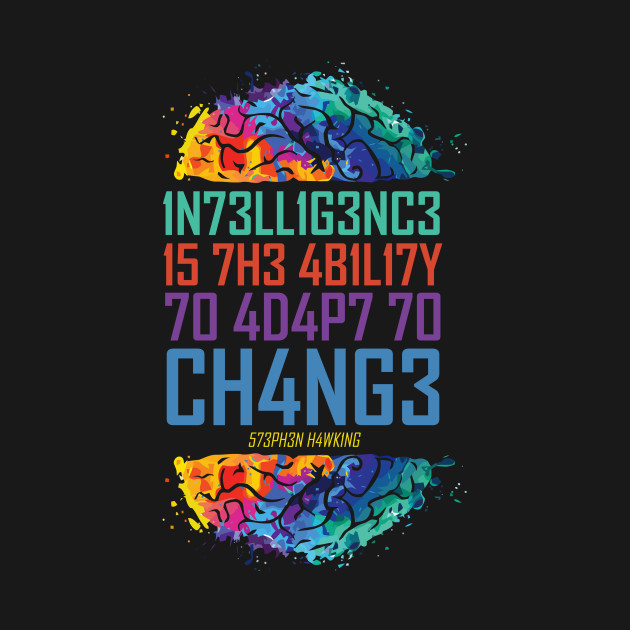The Νew Intelligent Company exists here and now.
5 years ago, if someone was telling you that a bank could exist inside your phone without a physical branch office, you would say “No way”. N26 not only managed to be a bank in your mobile, but achieved to be one of the fastest growing banks in Europe boasting 200,000 customers.
We live in the era of disruption where the established business operations i.e. the current business models, are threatened by extinction. Transitioning into a new business model implies a new Strategy, as well as, re-assessment of Company Structure and People. Technology is advancing fast and for those Company Boards who understand it, it makes it an uncomfortable agenda point, if not the entire agenda. In addition, the thoughts & actions of Board executives, who understand the urgency to change the status quo, lack the specificity required to create a strategy to address the real issues. Instead, their effort is dissipated in various initiatives, born out of desperation to act, lacking a cohesive strategy.
Initiatives e.g. “let’s take our Company to the Cloud” do not equate with Strategy which will account for the ecosystem of where the company currently lies.
Stephen Hawking’s phrase “Intelligence is the Ability to Adapt to Change” holds true not only for the SMEs but also for the big ones. It’s expected that 50% of Today’s Fortune 500 will be extinct in 10 years.
We need right now to step back and questioned ourselves:
“How are we going to survive in this radically changing digital transformation scene?”.
“How do we re-architect the ways do things?”.
The solution lies in the transformation of a Company into an Intelligent one.
Successful Companies were always run by intelligent people.
The problem in big corporations is that there are only a few of them, as the intelligence of most of their staff is lost somewhere in the hierarchical system; specifically, in politics, procedures, rules and regulations, that kill intelligence.
It is accepted that today, a Company to survive and grow, must be a continuously Learning Company.
 This needs two prerequisites:
This needs two prerequisites:
- The first is the freedom for the intellectual input of the Company staff, its reception and positioning in the collective nous of the Company for future development and exploitation.
- The second is the existence of a common intelligence coding system within the Company. This is called a common mental model. The digital tools available can support the creation of this model.
The experts tell us that:
“Continuous adaptation and growth in a changing business environment, like the one we have now, depends on institutional learning which is the process whereby management teams change their shared mental models of the Company, their markets and their competitors”
You have to understand It’s not about changing your business plan… It’s about changing your corporate DNA…
You Need to Mutate your Corporate Culture
According to McKinsey, legacy financial institutions will see profits decline 20%–60% by 2025 if they fail to evolve digitally. Startups alone won’t fill that vacuum: Stewards must emerge from the old guard of financial services. While PwC predicts that 77% of Financial Institutions expect to adopt blockchain as part of an in production system or process by 2020.
You need to embrace the disruptive nature of FinTech with the right decisions and the right leadership.
Take as example how Jeff Bezos encapsulated such a philosophy in his letter to shareholders just before Amazon’s 1997 IPO:
We will continue to make investment decisions in light of long-term market leadership considerations rather than short-term profitability considerations or short-term Wall Street reactions…. We will make bold rather than timid investment decisions where we see a sufficient probability of gaining market leadership advantages. Some of these investments will pay off, others will not, and we will have learned another valuable lesson in either case” is exactly how, with the help of leading edge technology, you can transform your Companies into intelligent Companies with built-in institutional learning.
 The first issue to be examined is to what extend your Company is in position to adopt and absorb the new tools/technologies available.
The first issue to be examined is to what extend your Company is in position to adopt and absorb the new tools/technologies available.
This is a critical issue. Attempts to turn a Company into an Intelligent Company fail in most cases because of Company inadequacies and less by provider’s responsibility.
The principal reason is inadequacy of Company’s personnel to understand the new tools. How to successfully manipulate data and extract those that are decision foundations, how to analyze digital information/insight and process it into intelligence, how to track transactions using Blockchain, how to simplify and deepen simultaneously process monitoring using IoT, etc. .
Another reason is internal resistance by the middle managers of the Company that are greatly upset by this radical change, what Nectarios Liolios calls the “permafrost” of resistance to change.
The third reason, often leading to failure, is choosing a digital services provider, to outsource the work, on the basis the provider’s presentation and demos.
If a very detailed and prioritized analysis and specification of needs has not been previously done internally, this is courting disaster.
It is a prerequisite to form a transition team inside the Company, most probably enriching this team with the addition of new relevant talent and providing it with Senior Leadership. Senior Leadership should provide the transition team with a clear Strategic Direction.
The team subsequently will select the necessary outsourcing contractor, on the basis of its identified roadmap.
The new tools offer a new magnificent opportunity for C-suite maximization of collective capabilities. The C-level officers of the Company can work together, not in a primarily sectoral mode as now, but in a new collective integrated mode that multiplies the collective intelligence, swiftness and flexibility in the principal virtue of Leadership, which is:
Visionary, Informed, Intelligent, Correct & Timely decision making.
The adoption of the new tools is not optional, it is mandatory. The WHY has been answered by most of you by reading this article.


